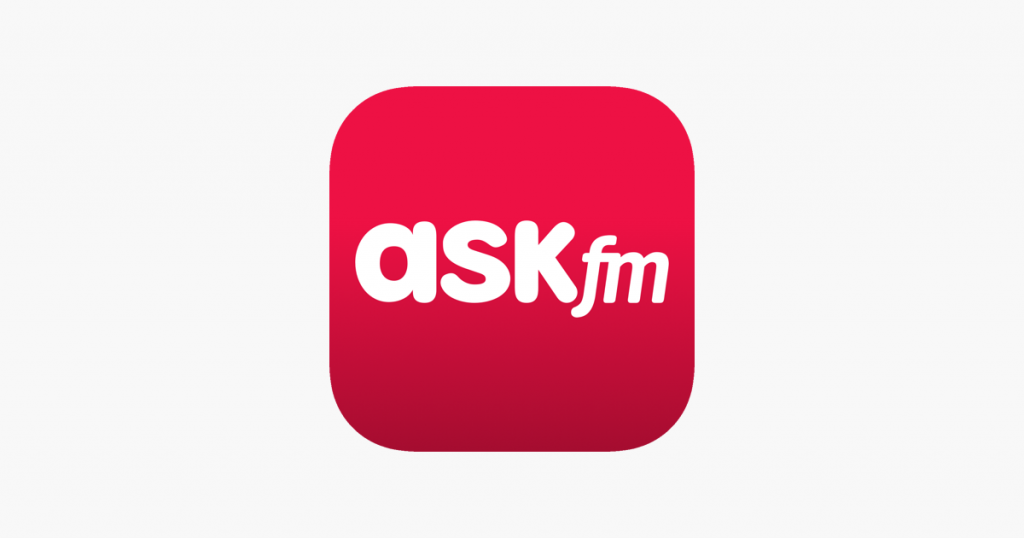ENEMY AHEAD: Among the most vicious app is the Pub G game which encourages extreme violence. Though it is been banned other versions have been introduced
By Charise Rohm Nulsen
When you innocently believe that your children are doing e-learning they may be actually playing deadly games. A concern mother has installed a CCTV camera so that she can track on the kids are upto.
We’ve compiled the ultimate list of the sites and apps tweens and teens are flocking to in 2019. Plus, we have useful tips for protecting your child from cyberbullying and other online safety hazards.
Pop quiz: What is Voxer? If you’re scratching your head, it’s time to read up on the trendy new social media apps kids are using. Friending your child on Facebook is now just the tip of the iceberg when it comes to online safety. Click through to see some of the sites and apps tweens and teens are flocking to these days, and get useful tips for protecting your child from cyber- bullying and other online safety hazards. Also, check out these 10 apps that can help you monitor your child online.
TikTok

Purpose: TikTok is an app for creating and sharing short videos. Users can create short music videos of 3 to 15 seconds and short looping videos of 3 to 60 seconds. It encourages users to express themselves creatively through video. Special effects can be added to the videos.
Why Parents Should Be Worried: Thirteen is the minimum age, but there isn’t a real way to validate age so anyone can download the app. Also, parents express concern that there is a lot of inappropriate language in the videos so it’s not appropriate for young children. Lastly, by default, all accounts are set to public so strangers can contact your children.
YouTube

Purpose: YouTube is a place to house and share your videos. You can control privacy settings. It’s also a great resource for educational videos and entertainment.
Why Parents Should Worry: Inappropriate content has been sliced into both all-ages content and children’s content. Also, comments on videos can be extremely inappropriate and hurtful. YouTube also has a known pedophile problem which is major cause for concern.
Tellonym

Purpose: This is an anonymous messenger app. It calls itself “the most honest place on the internet.” This app is extremely popular in middle schools and high schools and it allows kids to ask and answer questions anonymously.
Why Parents Should Worry: It is a regular occurrence to see cyber bullying, violent threats, and sexual content. It also offers unmonitored access to the internet. The age restrictions are inconsistent ranging from 12 to 16, but this app is inappropriate for anyone younger than being in their late teens.
Bigo Live

Purpose: Bigo is a live streaming app. It is rated for teens 17 and up. Users can vlog about their lives, live stream video game play, and host their own shows.
Why Parents Should Worry: There is no age verification and users have to provide personal info like their age and location. This is a place where bullying, nudity, violence, and profanity is common.
IMVU

Purpose: This is a virtual world game like SIMS. Users interact with each other as avatars. IMVU stands for Instant Messaging Virtual Universe.
What Parents Should Worry: There is nudity and sexual encounters in areas that are for 18+, but there is sexual talk and behaviors in the regular area of IMVU as well. There is a Chat Now feature that randomly pairs users with other users and can lead to inappropriate pairings and interactions. All profiles are public, and there can be bullying and predators trying to get other users to share their phone numbers and to send pictures.
Houseparty

Purpose: Houseparty is a video chatting app that’s pretty open. Friends can communicate with each other through live video and texts in chat groups.
Why Parents Should Be Worried: There’s no screening and the video is live, so there’s nothing to keep kids from inappropriate content. Users can send links via chat and even take screenshots. There’s also nothing keeping friends of friends joining groups where they may only know one person.
Tinder

Purpose: Tinder’s developers describe the app as “the fun way to connect with new and interesting people around you.” But it’s mainly used as a dating tool or an anonymous hook-up (read: one-night stand) locator by 20-somethings, college students, and even younger teens and tweens. (Yikes!)
Why Parents Should Worry: The app is rated ages 17+ but Tinder’s privacy policy allows teens as young as 13 to register (the app connects with Facebook — which is also technically for ages 13+ — to pull in photos for users’ Tinder profiles). Tinder helps people find others in their geographic location and allows users to view each others’ photos and start instant messaging once both people have “liked” one another. The geo-location features and anonymous nature of the app put kids at risk for catfishing, sexual harassment, stalking, and worse. Learn more scary facts about the Tinder app.
Ask.fm

Purpose: This app allows users to interact in a question-and-answer format — with friends, peers, and anonymous users alike.
Why Parents Should Worry: The app is rated ages 13+ and is most popular in Europe but is catching on in the U.S. Some kids have used the app for hurtful cyberbullying that has been linked to suicides, including the death of 12-year-old Rebecca Sedwick of Florida. British schools have sent home letters calling for students to stop using ask.fm because of its use in several cyberbullying incidents there, and its loose regulation and lack of monitoring. In response to the uproar in the U.K., the site added a button where users can report abuse, but some parents feel it’s too little, too late. Check out Webwise’s Ask.fm Guide for Parents and Teachers.
Kik Messenger

Purpose: Kik is a mobile app that people can use to text with friends at high speed and with more of a “face-to-face feel” than regular texting (users’ profile pictures appear in a little bubble next to their text, and they can quickly text photos, sketches, or even pre-designed greeting cards to individuals or groups).
Why Parents Should Worry: The app is rated ages 17+, but there is no age verification so anyone can download it. Like some other instant messenger apps, Kik allows your teen to connect with others using just a username (rather than texting from her phone number). But it begs the question: Should teens be texting with people beyond their phone contacts? Reviews in the App Store and Google Play store reveal that many people use Kik to meet strangers for sexting. The app also been connected with cyberbullying. Rebecca Sedwick, the Florida bullying victim who killed herself, reportedly used Kik and Voxer in addition to ask.fm — receiving messages like “Go kill yourself” and “Why aren’t you dead?” — without her mother even knowing about the apps. It’s no surprise Kik has landed on some parents’ “worst apps” lists. Check out bewebsmart.com’s advice on Kik.
Voxer

Purpose: This walkie-talkie PTT (push-to-talk) app allows users to quickly exchange short voice messages. They can have chats going on with multiple people at a time and just have to tap the play button to hear any messages they receive. Although it largely has an adult following, including some people who use it for their job, it’s becoming popular among teens who enjoy its hybrid style of texting and talking.
Why Parents Should Worry: Hurtful messages from cyberbullies can be even more biting when they’re spoken and can be played repeatedly. Surprisingly, the app is rated ages 4+ in the App Store.
Snapchat

Purpose: Snapchat is an app that allows users to send photos and videos that disappear after they’re received. It’s rated ages 12+. The filters and special effects allow users to alter pictures.
Why Parents Should Worry: Some kids are using the app to send racy pics because they believe the images can’t be saved and circulated. But it turns out that Snapchat pics don’t completely disappear from a device, and users can take a screenshot before an image vanishes in the app. And while recent studies revealed that “sexting” (sending sexual messages and images, usually via text message) is not as popular as parents had feared, “disappearing photo” apps like Snapchat might embolden kids to send more explicit photos and texts than they would have before through traditional texting. Check out connectsafely.org’s “A Parents’ Guide to Snapchat.”
Vsco

Purpose: Vsco is a photo creation app that gives users the tools to shoot, edit and post images to a profile, kind of like Instagram.
Why Parents Should Worry: You should know that you have to manually turn on privacy settings and limit location sharing. There are also in-app purchases for more serious photo editing tools that could cost you some serious money if your kid decides to download them.
Whisper

Purpose: This 17+ app’s motto is: “Share Secrets, Express Yourself, Meet New People.” It has a similar feel to the now-defunct PostSecret app, which was discontinued shortly after its release because it filled up with abusive content.
Why Parents Should Worry: Whisper lets users set up anonymous accounts to make their messages or confessions overlap an image or graphic (similar to e-postcards), which other users can then “like,” share, or comment on. While it allows for creative expression, it can also take overly personal content viral. The app also shows a user’s location. Although the app is geared toward older teens and adults, younger children are finding their way to it. A 12-year-old girl in Washington was reportedly raped by a 21-year-old man who met her on Whisper.
Tumblr

Purpose: Many children and young teens are also active on this 17+ photo-sharing app. It can also be used for sharing videos and chatting.
Why Parents Should Worry: Common Sense Media says Tumblr is “too raunchy for tykes” because users can easily access pornographic, violent, and inappropriate content. Common Sense also notes that users need to jump through hoops to set up privacy settings — and until then, all of a user’s photo and content is public for all to see. Mental health experts say that Tumblr can be damaging to adolescents’ mental health because it tends to glorify self-harm and eating disorders.

Purpose: This hugely popular photo-sharing site is owned by Facebook, so you may be more familiar with it than with other photo-sharing apps. Users can add cool filters or create collages of their photos and share them across Facebook and other social media platforms.
Why Parents Should Worry: The app is rated 13+ and may be slightly tamer than Tumblr, but users can still find mature or inappropriate content and comments throughout the app (there is a way to flag inappropriate content for review). “Trolls” — or people making vicious, usually anonymous comments — are common. A user can change the settings to block their location or certain followers, but many users are casual about their settings, connecting with people they don’t know well or at all. Check out connectsafely.org’s “A Parents’ Guide to Instagram.”
Look

Purpose: Look is a free video messaging app. Users can send video (of course), test, emojis and gifs. They can also draw on and use filters on their videos.
Why Parents Should Worry: With Look, strangers can message kids pretty easily, and because there are no content filters, kids can come across inappropriate content. Users have reported cyberbullying activity and have found it difficult to delete their accounts.
Jailbreak Programs and Icon-Hiding Apps
Purpose: These aren’t social media apps — and they’re confusing — but you should still know about them (especially if you have a tech-savvy teen or have had to take away your child’s mobile phone privileges because of abuse).
Why Parents Should Worry:”Jailbreaking” an iPhone or “rooting” an Android phone basically means hacking your own device to lift restrictions on allowable applications — meaning, the user can then download third-party apps not sold in the App Store or Google Play store (read: sometimes sketchy apps). It’s hard to say how many teens have jailbroken their mobile device, but instructions on how to do it are readily available on the Internet. Cydia is a popular application for jailbroken phones, and it’s a gateway to other apps called Poof and SBSettings — which are icon-hiding apps. These apps are supposedly intended to help users clear the clutter from their screens, but some young people are using them to hide questionable apps and violent games from their parents. Be aware of what the Cydia app icons look like so you know if you’re getting a complete picture of your teen’s app use.
What About Facebook and Twitter?
Do all these new social media apps mean that Facebook and Twitter are in decline? A 2013 survey by Pew Internetfound that U.S. teens have “waning enthusiasm” for Facebook — in part because their parents and other adults have taken over the domain and because their peers engage in too much “drama” on the site. But Facebook still remains the top social media site among U.S. teens, who say that their peers continue to stay on the site so they don’t miss anything happening there. Your child may keep a profile on Facebook but be much more active on newer platforms.
Meanwhile, Twitter use is rising among teens. The 2013 Pew survey found that 24 percent of online teens are on Twitter, up from 16 percent in 2011. Twitter is more popular among African American teens than Hispanic and white teens.
Next Steps for Parents
• Sit down with your child and find out which apps she’s using, how they work, and whether she has experienced any issues on them, such as cyberbullying or contact from strangers.
• Look into apps and products that help you monitor your child online.
• If your main concerns are web browsing and social media safety, we recommend Qustodio. They provide a comprehensive dashboard to help you monitor your child’s online activity. Their premium subscription allows you to track kids’ location, block certain games and apps, monitor calls and text messages, and more. Browse Qustodio’s offerings.
•If your main concern is filtering web content and setting internet time limits for multiple kids and/or devices, Net Nanny is a great option. The software automatically filters web content for each user based on whether they fit the Child, Pre-Teen, Teen, or Adult profile. It allows you to “mask” profanity on web pages. It also makes it easy to prevent web access during homework time or bedtime. Browse Net Nanny’s offerings.
Tips for Protecting Your Child Online
•You can set up age limits on your child’s device. The 2013 Pew Research Center survey found that nearly 40 percent of teens say that they have lied about their age to gain access to a site or create an account, so restricting kids’ access to apps by age rating is a wise move.
•You can’t join every site or app and monitor your child’s every move online; teens will always find a new platform that their parents don’t know about yet. Rather than hovering or completely barring your child from downloading every social media app, sit down and go over some general rules to keep him smart and safe online.
•Tell your child to let you know if someone is hurting her or making her feel uncomfortable online, even if the person is acting anonymously. Use the Cyberbullying Research Center’s “Questions Parents Should Ask Their Children About Technology” to guide your discussion. Our printable anti-bullying pledge and parent/child online agreement are also useful tools.
•Make a rule that your child must ask for permission before downloading any apps — even free ones — just so you’re aware of them. When your child wants to join a new social media platform, go through the security settings together to choose the ones you’re most comfortable with. Advise your child not to share passwords with anyone, including best friends, boyfriends, or girlfriends.
Coutersy:www.familyeducation.com
